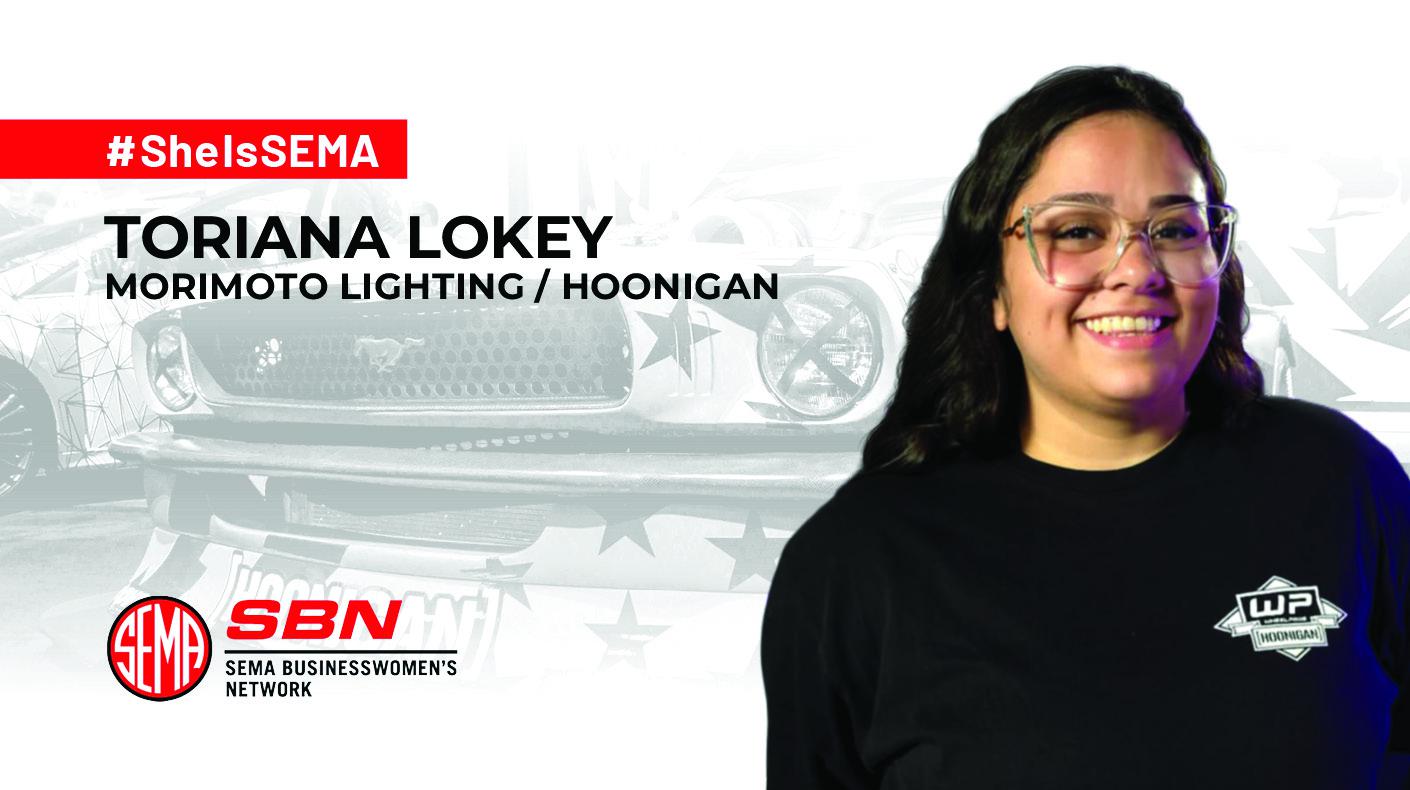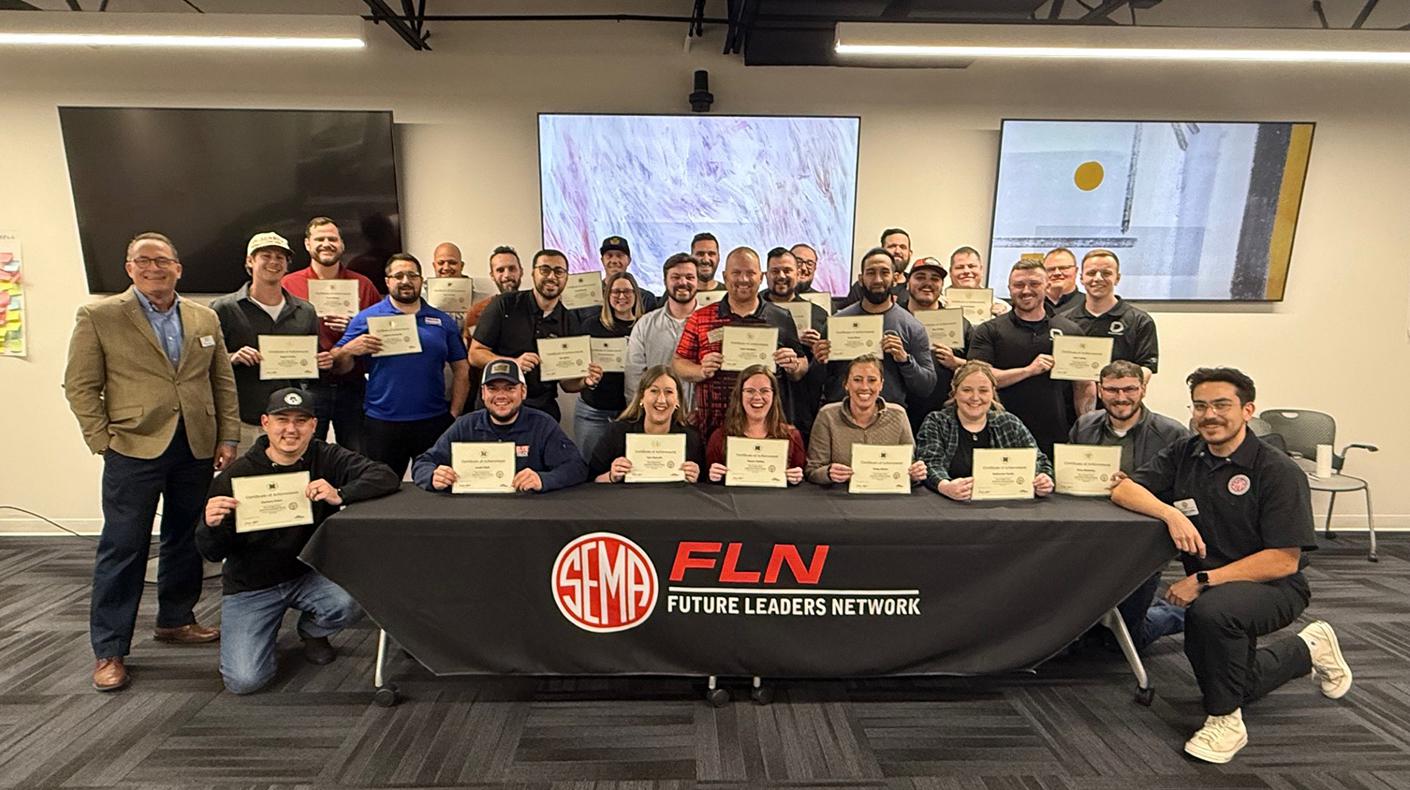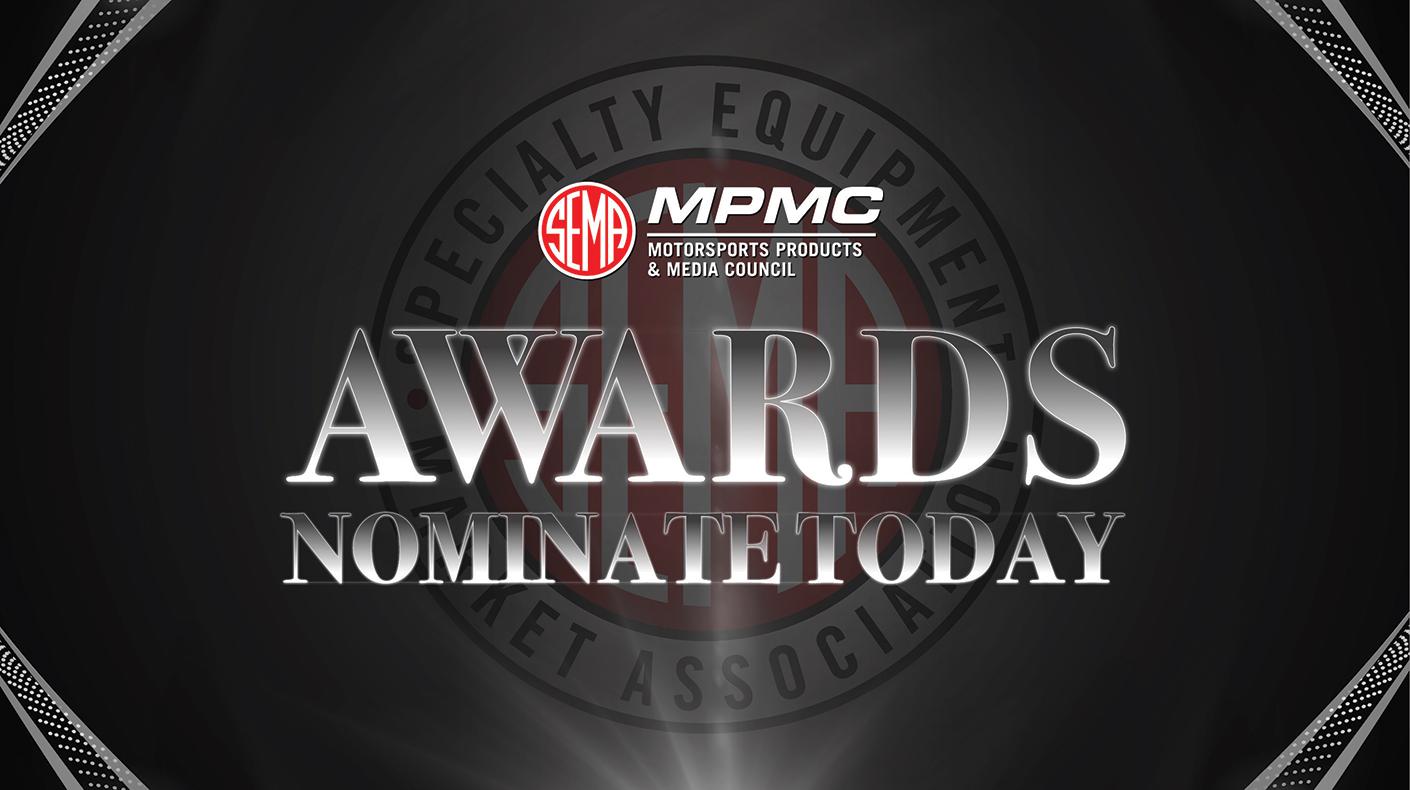By Drew Hardin
The first High Performance and Custom Trade Show in January 1967 was modest, but it was deemed a success by attendees on both sides of the pipe-and-drape booths, as well as by SEMA and Petersen Publishing, which put on the event. There was almost immediate talk of a second Show, but at a venue more accommodating than the Los Angeles Dodger Stadium's drafty pavilions.
According to Ray Brock's "Publisher's Report" in the May 1967 issue of Petersen's Hot Rod Industry News (HRIN), the new location chosen for the Show would be "the most modern of all" convention centers, the brand-new complex in Anaheim, California, where "facilities are second to none in the country." A 100,000-sq.-ft. exhibit hall would hold the Show "in one huge rectangular area, so booths will be ideally arranged with wide, roomy aisles." HRIN reserved 500 rooms for attendees at the adjacent Disneyland Hotel.

The SEMA Show floor at the Anaheim Convention Center, January 1969.
The Show would take place January 4-6, 1968. Initial response by manufacturers was "fantastic," Brock wrote, and SEMA and Petersen had already locked in dates at Anaheim out to 1972.
In these early days, the event was still officially called the High Performance and Custom Trade Show, but by HRIN's June 1967 issue the magazine admitted that it was "more commonly referred to as the SEMA Show." Show hours (1:00-6:00 p.m., Thursday and Saturday; 1:00-9:00 p.m. Friday) "were carefully selected to take advantage of optimum business hours while at the same time providing ample 'social hours.'" Planned activities outside the Show included cocktail parties, banquets, golf tournaments and business seminars. "The show will have a professional air without losing its intimate and warm atmosphere."
Accounts vary, but most reports say there were between 90–100 booths at the Dodger Stadium trade event. The first Anaheim Show doubled that number. Brock's post-Show reporting said "201 ten-by-ten booths" were set up by 140 exhibitors, while another 30 booths "were used to display show cars throughout the floor for 'dress-up' and to show actual use of special performance and custom accessories." Exhibitors "made their 1968 sales pitches to 3,800 distributors and dealers from all over this country, Mexico and Canada."
HRIN's coverage made note of several trends spotted at the Show, including the number of booths devoted to Volkswagen speed and custom equipment. "Looks as if dealers are finding out, as we reported better than a year ago, that the VW is another flathead," wrote Bob Leif. Off-roading equipment, including that on display by Pete Condos' Con-Ferr and Brian Chuchua's Four Wheel Drive Center, "is getting a good portion of dealer interest," as were high-performance-related jackets and T-shirts and "fiberglass items" from "hoods to body pieces." There were even a few displays paying attention to new emissions laws, including Jardine headers "with the air pump openings" and a "pair of engines that featured speed items such as manifolds and cam" displayed by the California Air Resources Board.

The SEMA Banquet was held on Wednesday evening at the 1970 SEMA Show. Astronaut Pete Conrad, commander of the Apollo 12 mission, was scheduled to be the guest speaker. A bad case of the flu kept him home, so SEMA President Roy Richter (right), read the commemorative plaque to him over the phone with help from Petersen Publishing Vice President Ray Brock.
Leif's story also reported on some of the Show's ancillary events, including several popular tours of nearby manufacturing facilities, hosted by "tour guide" and SEMA Show ramrod Alex Xydias, and "activities for the ladies" that included shopping and a luncheon on historic Olvera Street and a tour of the Queen Mary in Long Beach.
The Convention Center's management said the Show "was one of the finest staged to date in the Center," Brock said, giving credit to the exhibitors. "The interesting design provided by the performance and custom items and the displays used to show these lines added much to the overall appearance of the SEMA Show.
"And the professional composition of the booths, many of which were designed and built by the manufacturers, further emphasized how the industry has grown from a backyard hobby to a half-billion dollar giant in just those few years since the end of World War II," he added. "We have become big league, and now the whole automotive accessory and parts industry is either joining in the fascinating sport or taking a long, hard look at how they can join the team."
For 1969, the Show moved to January 15-17 and a Wednesday-Thursday-Friday schedule. Xydias (now the magazine's editor) said there were more than 330 booths sold, and the Show attracted "many of the large aftermarket companies who were beginning to make performance equipment," including Holley, TRW, Champion, Raybestos, Clevite and others. "Over 6,500 dealers, reps and buyers from companies
large and small were there," he wrote, adding that "the SEMA Dinner was so successful it had to be moved from the Disneyland Hotel Banquet Room to the Convention Center's beautiful Sports Arena," where more than 1,300 people were served.

The STP booth at the 1969 SEMA Show. The addition of national aftermarket companies marked a milestone in the Show's growth.
Writing in the November 1969 HRIN, Xydias reported that the 1970 Show was "almost sold out now, months before the show opening." He expected the show's 450 booths would encompass the entire 100,000 sq. ft. of the Convention Center's space. The Show took place again in late January, with pre-Show activities that included the popular factory tours and a HRIN cocktail party. Holley sponsored the show's kick-off Awards Breakfast Wednesday morning, and the SEMA Banquet was held that evening. It turns out Xydias' pre-show booth count was a bit low, as 481 were sold. More than 7,100 people, plus 1,500 "VIP guests," attended the Show that year.
For 1971, the Show grew to four days, Tuesday-Friday, and "there were more booths sold (535) to more exhibitors (310) than ever before," said HRIN in its Show coverage. This also marked the first time the Show grew beyond the main Convention Center floor space and required 30,000 additional sq. ft. in adjoining facilities. Registration topped 10,000 for the first time, representing an increase of more than 30% over 1970.
The trend continued for 1972. The final tally was 550 booth spaces for 321 exhibitors, 12,000 registered attendees, and the Show "expanded beyond the 130,000 sq. ft. Anaheim Convention Center's main building, requiring an additional 50,000 sq. ft. in the main arena," reported HRIN. Demand for seminars, receptions and forums was high enough that they were scheduled for the entire week.

From left: Carroll Shelby, Tom Binford and Wally Parks take a break at the 1972 SEMA Show.
Just after the close of the 1972 Show, SEMA announced the dates for the 1973 Show would move up from the traditional January timeframe to November 16-18, 1972. "The date's revision was brought about by the APAA's decision to locate their annual show in the Los Angeles Convention Center on November 13, 14 and 15," explained Els Lohn, SEMA Show committee chairman (and president of Eelco Manufacturing). By moving its dates, SEMA wanted to "ease the schedule of exhibitors and attendees alike."
"Literally two for the price of one," is how Xydias positioned the move in his February 1972 HRIN "Publisher's Report," which addressed some of the concerns voiced by industry members. "Two shows in the same week in the same area for the first time should attract a greater number of buyers than either could expect to do alone," he reasoned.
As for worries about duplication of products and exhibitors, Xydias said that "the overlap factor varies by year, but it averages between 10% and 15%." APAA "contains the latest automotive parts and accessories," while the SEMA Show was about "the latest high-performance and custom equipment." In fact, SEMA policy, he said, limited the merchandise displayed to performance or custom-oriented products "to help avoid any confusion.
"Let's keep moving ahead," he said at the Report's conclusion. "Controversy doesn't sell a damn thing."

The 1973 SEMA Show was the first to take place in November, and it commemorated SEMA's 10th anniversary.
And move ahead they did. HRIN's post-show report called it "the most successful SEMA Show in its history," with more than 13,000 registered attendees, including more than 6,000 buyers on opening day alone, both attendance records. By now, the Show had "grown well beyond the exhibition of new products," HRIN pointed out, as "SEMA Show week now includes almost every important function of the performance industry."
It wouldn't be long, though, before the product exhibition and those other important functions would tax the Anaheim facility to the point that a bigger venue was needed. The controversy Xydias addressed over moving the Show dates would pale in comparison to what happened when the new location—Las Vegas—was announced for the 1977 Show.
There were other clouds on the horizon, too. While the SEMA Show grew steadily in these early years, SEMA and its member companies faced new challenges dealing with "noise, safety and air pollution," wrote Xydias in early 1972. "It is a great opportunity for the high performance and custom industry to be a leader. Fortunately, we have the technical knowledge, the good old 'hot-rod' ingenuity, to be successful pioneers in the solution of these problems. We also have the organization through which we can work effectively, the Specialty Equipment Manufacturer's Association."





